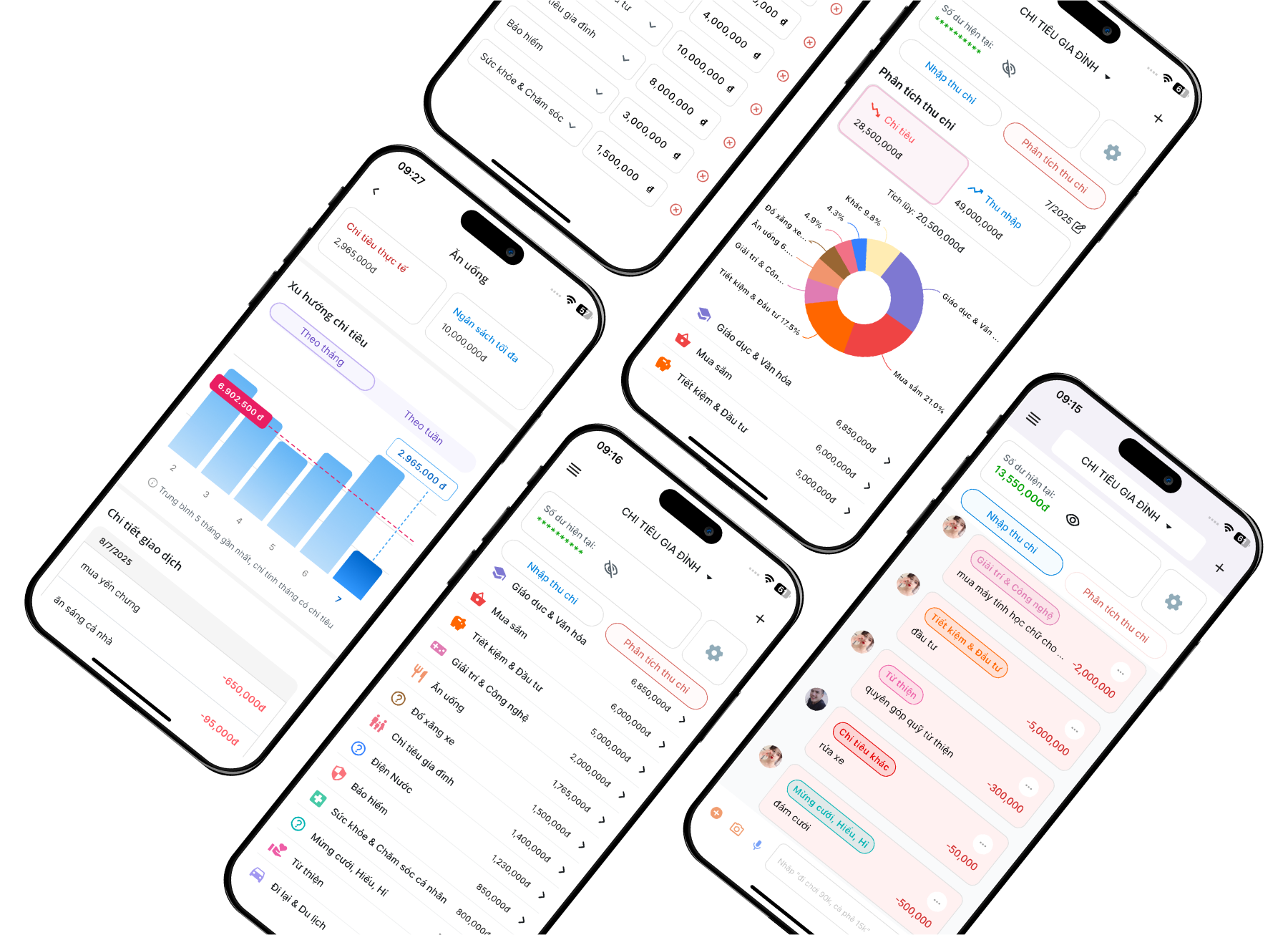Applying the 80/20 Principle in Expense Management
SCAN QR CODE

Did you know that just 20% of spending habits can cause 80% of financial waste? The 80/20 rule, also known as the Pareto Principle, is being widely applied to optimize spending management, helping you focus on the most important factors without changing your entire lifestyle. In this article, we will explain this principle in finance, how to apply it to income and spending, focus on major waste, track improvements through charts, and set up alerts on the X Money app – an AI tool that helps you master your cash flow effectively.
Explaining the 80/20 Rule in Finance
The 80/20 rule, or the Pareto Principle, originates from the observation of economist Vilfredo Pareto: 80% of the results often come from 20% of the causes. In personal finance, this principle asserts that 80% of financial problems (such as debt or deficits) stem from 20% of spending behaviors, while 80% of income can be "swallowed" by 20% of large expenses.
For example, 80% of your monthly spending may come from 20% of categories such as eating out or impulsive shopping, leading to significant waste. Conversely, dedicating 20% of your income to savings/investment can create 80% of long-term financial stability. This principle encourages focusing on the "important 20%" to achieve maximum results, rather than dispersing energy.
Applying to Income and Spending
Applying the 80/20 rule to income and spending helps you allocate resources intelligently, prioritizing savings without sacrificing needs.
-
With income: Allocate 20% of your income immediately to savings/investment (such as an emergency fund or retirement), and use the remaining 80% for daily expenses. For example, if your salary is 10 million VND/month, allocate 2 million VND to savings before spending anything – this ensures "paying yourself first."
-
With spending: Identify the 20% largest expenses (such as housing, food) that account for 80% of the budget, and optimize them to reduce waste. Conversely, 80% of small expenses (such as daily coffee) only account for 20% of total expenses, but if not controlled, they can "add up."
-
Tip: Use this rule to budget: 80% for needs/wants, 20% for the future, helping to balance while still achieving financial goals.
By applying this way, you can reduce unnecessary spending by up to 15-20% without affecting your lifestyle.
Focusing on "Major Wasteful" Expenses
The 80/20 principle emphasizes focusing on the 20% of expenses that cause 80% of waste, helping you cut effectively without changing everything.
-
Identify major wasteful expenses: Analyze spending to find the 20% of categories that "swallow" 80% of the money, such as eating out (accounting for 30% of the budget but only providing 20% of nutritional value) or impulsive online shopping.
-
Cut smartly: For large expenses, apply small changes such as cooking at home instead of eating out, reducing costs by 50% while maintaining quality. Ignore 80% of small expenses if they don't have a major impact.
-
Tip: Use an app to categorize and prioritize cutting the 20% of main "culprits," helping to save quickly without feeling deprived.
Focusing in this way will bring 80% of financial improvement from just 20% of the effort.
Tracking Improvement Through Charts
To see the effectiveness of the 80/20 principle, track improvement through charts – a visual tool that helps you measure progress.
-
Create charts: Use an app to draw bar or line charts showing the spending ratio before/after application (for example: A chart showing eating out expenses decreasing from 40% to 25% after cutting 20% of the large expenses).
-
Track periodically: Check weekly/monthly to see if the 20% changes bring 80% improvement, such as savings increasing by 15% due to waste reduction.
-
Tip: Combine Pareto charts to clearly visualize the 20% of categories that account for 80% of spending, helping to adjust in time.
Charts not only track but also create motivation, helping you maintain the principle in the long term.
Setting Up Alerts on X Money
To apply the 80/20 principle effectively, use X Money – an AI-powered income and expense management app, free on the App Store and Google Play, with an alert feature to help you control in real-time.
-
Set up alerts: Set limits for the 20% largest expenses (for example: Alert when eating out expenses exceed 20% of the budget), AI will notify you as soon as you are about to reach the threshold.
-
80/20 integration: Use AI to automatically categorize and alert if 20% of the categories account for more than 80% of spending, with optimization suggestions.
-
Benefits: Real-time alerts help prevent waste, combined with report charts to track improvement.
X Money turns the 80/20 principle into a practical tool, helping you manage spending smartly.
Applying the 80/20 principle in spending management not only helps you save but also brings great financial freedom from small changes.


Experience
AI-powered automatic financial management
Download X-money today and let AI automatically manage your daily income and expenses
SCAN QR CODE

Related articles
BlogsHow is AI Influencing Young People?
AI – A Tool Changing the Lifestyle of Young People AI (Artificial Intelligence) is no longer unfamiliar to the generation...
Applying the "No-Spend Day" Habit to Increase Savings
Are you looking for ways to increase savings without "tightening your belt"...
The Freelancer's Spending Handbook: Adapting to Fluctuating Income
You are a freelancer, free in terms of time but "passive" with your income, sometimes plentiful...